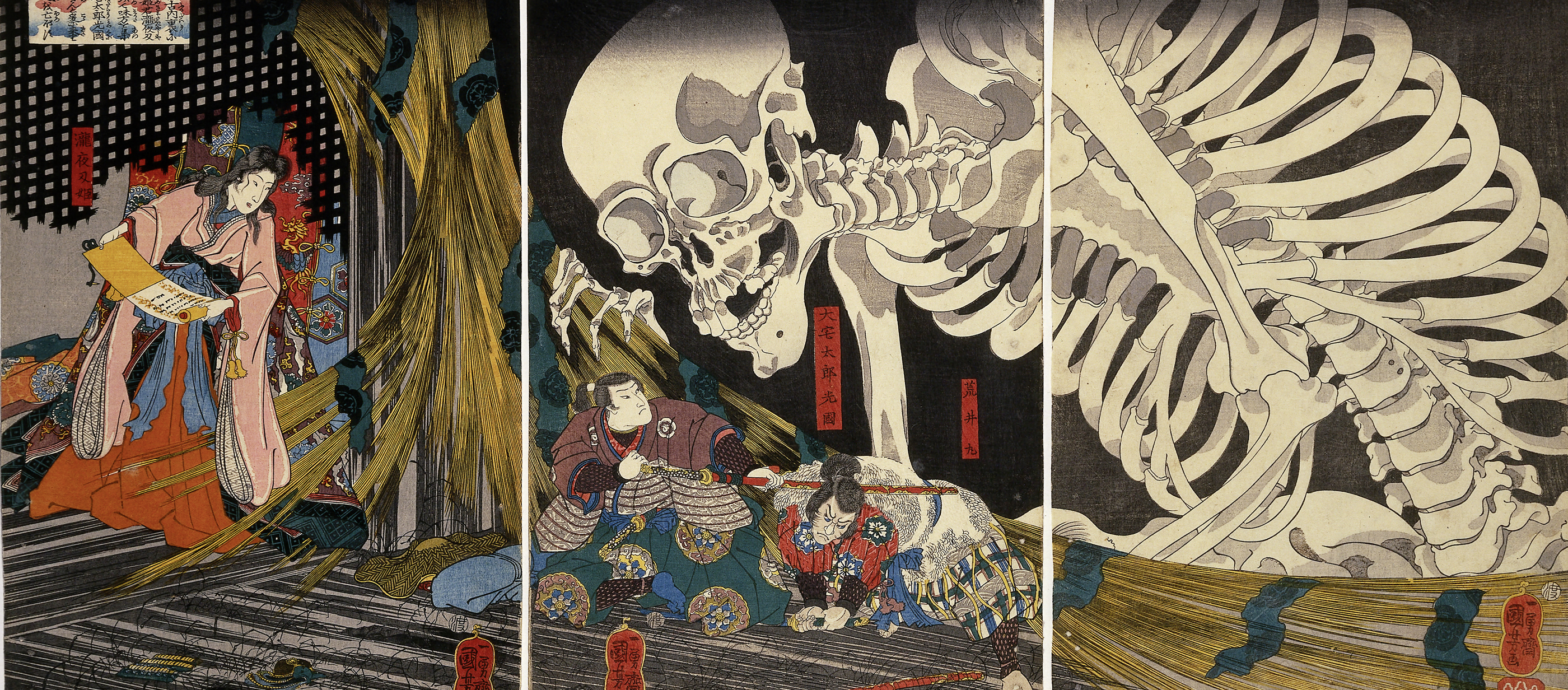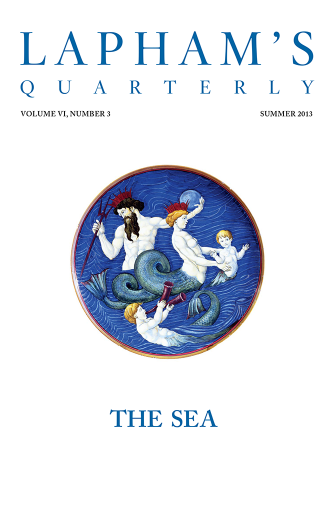Goblin foxes are peculiarly dreaded in Izumo for three evil habits attributed to them. The first is that of deceiving people by enchantment, either for revenge or pure mischief. The second is that of quartering themselves as retainers upon some family and thereby making that family a terror to its neighbors. The third and worst is that of entering into people and taking diabolical possession of them and tormenting them into madness. This affliction is called “kitsune tsuki.”
The favorite shape assumed by the goblin fox for the purpose of deluding mankind is that of a beautiful woman; much less frequently the form of a young man is taken in order to deceive someone of the other sex. Innumerable are the stories told or written about the wiles of fox women. And a dangerous woman of that class whose art is to enslave men and strip them of all they possess is popularly named by a word of deadly insult—kitsune.
Many declare that the fox never really assumes human shape, but that he only deceives people into the belief that he does so by a sort of magnetic power, or by spreading about them a certain magical effluvium.
The fox does not always appear in the guise of a woman for evil purposes. There are several stories, and one really pretty play, about a fox who took the shape of a beautiful woman, married a man, and bore him children—all out of gratitude for some favor received—the happiness of the family being only disturbed by some odd carnivorous propensities on the part of the offspring. Merely to achieve a diabolical purpose, the form of a woman is not always the best disguise. There are men quite insusceptible to feminine witchcraft. But the fox is never at a loss for a disguise; he can assume more forms than Proteus. Furthermore, he can make you see or hear or imagine whatever he wishes you to see, hear, or imagine. He can make you see out of time and space; he can recall the past and reveal the future. His power has not been destroyed by the introduction of Western ideas, for did he not, only a few years ago, cause phantom trains to run upon the Tokkaido railway, thereby greatly confounding and terrifying the engineers of the company? But, like all goblins, he prefers to haunt solitary places. At night he is fond of making queer ghostly lights in semblance of lantern fires flit about dangerous places, and to protect yourself from this trick of his, it is necessary to learn that by joining your hands in a particular way, so as to leave a diamond-shaped aperture between the crossed fingers, you can extinguish the witch fire at any distance simply by blowing through the aperture in the direction of the light and uttering a certain Buddhist formula.
But it is not only at night that the fox manifests his power for mischief: at high noon he may tempt you to go where you are sure to get killed, or frighten you into going by creating some apparition or making you imagine that you feel an earthquake. Consequently, the old-fashioned peasant, on seeing anything extremely queer, is slow to credit the testimony of his own eyes. The most interesting and valuable witness of the stupendous eruption of Bandai-san in 1888—which blew the huge volcano to pieces and devastated an area of twenty-seven square miles, leveling forests, turning rivers from their courses, and burying numbers of villages with all their inhabitants—was an old peasant who had watched the whole cataclysm from a neighboring peak as unconcernedly as if he had been looking at a drama. He saw a black column of ash and steam rise to the height of twenty thousand feet and spread out at its summit in the shape of an umbrella, blotting out the sun. Then he felt a strange rain pouring upon him, hotter than the water of a bath. Then all became black, and he felt the mountain beneath him shaking to its roots and heard a crash of thunders that seemed like the sound of the breaking of a world. But he remained quite still until everything was over. He had made up his mind not to be afraid—deeming that all he saw and heard was delusion wrought by the witchcraft of a fox.

Princess Takiyasha, tenth-century conspirator against the Japanese emperor, summons a skeleton to frighten government officials searching for her, by Utagawa Kuniyoshi, c. 1844.
Strange is the madness of those into whom demon foxes enter. Sometimes they run naked shouting through the streets. Sometimes they lie down and froth at the mouth and yelp as a fox yelps. And on some part of the body of the possessed, a moving lump appears under the skin, which seems to have a life of its own. Prick it with a needle, and it glides instantly to another place. By no grasp can it be so tightly compressed by a strong hand that it will not slip from under the fingers. Possessed folk are also said to speak and write languages of which they were totally ignorant prior to possession. They eat only what foxes are believed to like—tofu, aburage, azukimeshi—and they eat a great deal, alleging that not they, but the possessing foxes, are hungry.
It not infrequently happens that the victims of fox possession are cruelly treated by their relatives—being severely burned and beaten in the hope that the fox may be thus driven away. Then the Hōin or Yamabushi is sent for—the exorcist. The exorcist argues with the fox, who speaks through the mouth of the possessed. When the fox is reduced to silence by religious argument upon the wickedness of possessing people, he usually agrees to go away on condition of being supplied with plenty of tofu or other food, and the food promised must be brought immediately to that particular Inari temple of which the fox declares himself a retainer. For the possessing fox, by whomsoever sent, usually confesses himself the servant of a certain Inari, though sometimes even calling himself the god.
As soon as the possessed has been freed from the possessor, he falls down senseless and remains for a long time prostrate. And it is said also that he who has once been possessed by a fox will never again be able to eat tofu, aburage, azukimeshi, or any of those things which foxes like.
From Glimpses of Unfamiliar Japan. Having already reported on the West Indies for Harper’s Magazine between 1887 and 1889, the Greek-born writer accepted another assignment from the monthly in 1890 to go to Japan, where he hoped to capture a picture of “one taking part in the daily existence of the common people and thinking with their thoughts.” He became a Japanese subject around 1895 and served as an English professor at the Imperial University of Tokyo from 1896 to 1903. Hearn’s collection of Japanese ghost stories, Kwaidan, was made into a film in 1965.
Back to Issue


